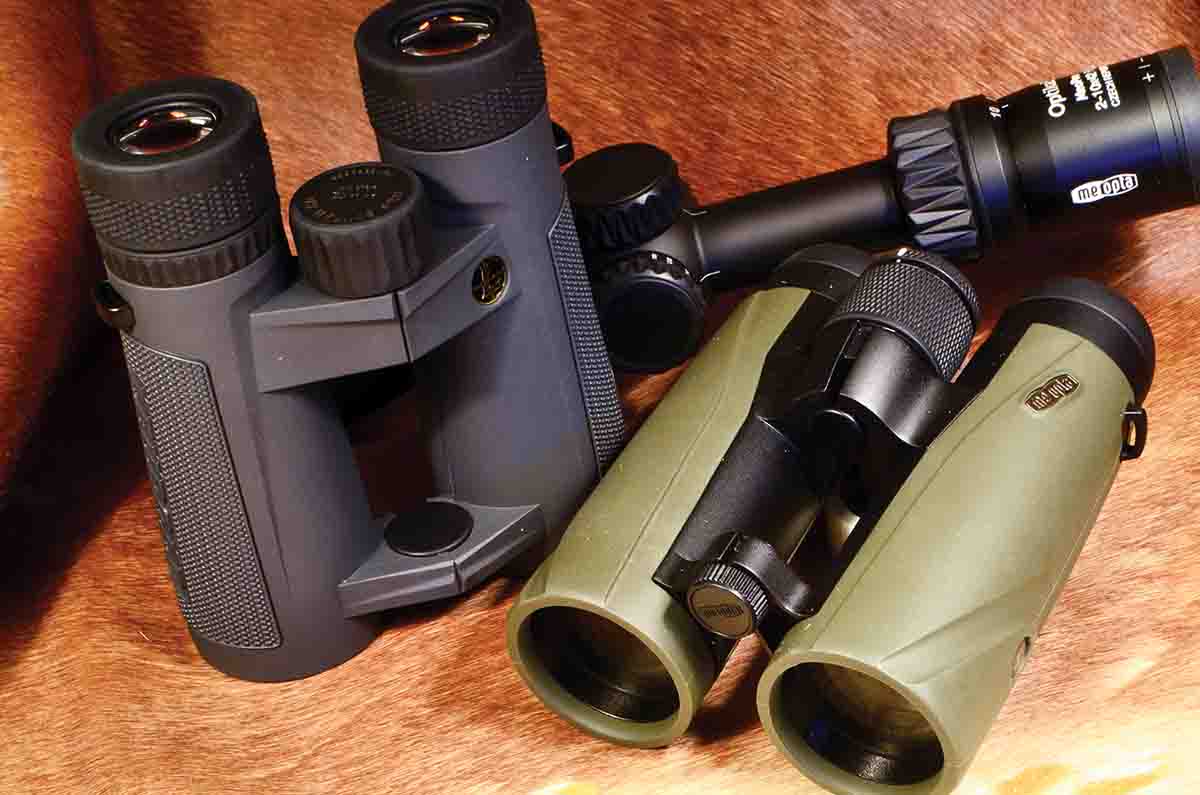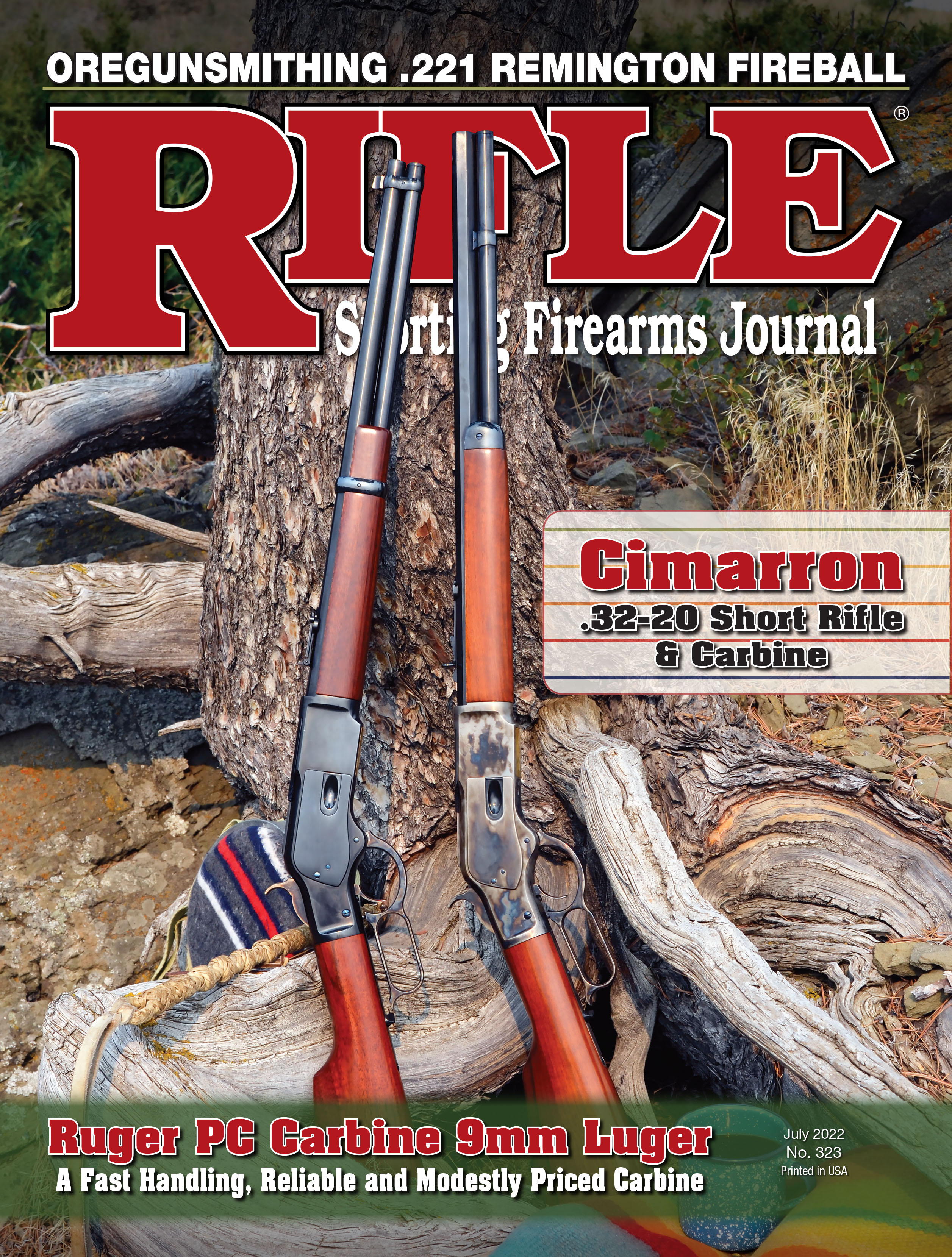Walnut Hill
Through a Glass, Brightly
column By: Terry Wieland | July, 22

Along about 1988, Jim Carmichel, then shooting editor of Outdoor Life, wrote an article about optical equipment imported from Europe. At the top of the tree, in both reputation and price, were riflescopes, binoculars and spotting scopes from Zeiss, in what was then West Germany.
Of the riflescopes, he wrote, “they are wonderful optical instruments, but damned poor riflescopes.” At the time, I did not quite grasp his point, although I came to later. Essentially, the Zeiss scopes of the 1980s were too big, too heavy, too complicated and too rigid – by which I mean, they were not versatile enough.
Their internal adjustments, for example, had too little range, up and down, east and west. If you mounted one and attempted to zero it, went as far as you could go, and found yourself still shooting six inches low at 100 yards, Zeiss’s helpful suggestion was to take it to a gunsmith and have him install a new set of mounts.
The problem here was not that Zeiss’s optical engineers did not know what they were doing. At that, they were the best in the world. (Their counterparts at Leitz, parent of Leica, would have disputed that, but they were not making riflescopes at the time.) The problem lay in two facts: One, the Zeiss engineers, or at least the decision makers, were not hunters and shooters; and two, European hunters rarely mounted their own scopes, or switched them from one rifle to another, as was common in the U.S.
We were dealing with two solitudes and it took many years to bridge the chasm.
In 2012, I went to Germany and Austria with Mike Jensen, then CEO of Zeiss USA, toured the optics factory, endured the obligatory lectures and did some hunting in the Alps. We had the
opportunity for some long conversations. Mike found that convincing German executives of what was needed to sell optics in America was a losing battle. Just when he thought one was listening, he was promoted, demoted, or entered a monastery and he was back to square one. Another friend, who had also worked briefly for Zeiss, told me that when advised what the American shooting public wanted, the response was “Vee must educate zee public!”
Mike Jensen stayed with Zeiss a few years, then left to set up in partnership with some German ex-colleagues, the company we know as GPO (German Precision Optics). Its stated goal was to produce riflescopes of justly renowned German quality, employing German techniques in less expensive but very fine optics factories in the Far East. Aside from price, an essential element was to provide products that were both “fantastic optical instruments” and “fine riflescopes” to update Jim Carmichel’s comment from 35 years ago.
On the subject of price – and this is just an impression, not a Consumer Reports judgement – GPO’s scopes and binoculars are right up there in quality, but the retail price is half, or less, what we might expect to pay for the big blue ‘Z.’
An important point to make is that the comparative testing of high-end optics long ago advanced far beyond what any of us is capable of distinguishing with our eyes. At the time, Mike Jensen and I were in Austria, Zeiss’s newest binocular, accurately billed as the finest ever made, listed for about $2,500. The model a step down from that, which had been top of the line, was still available for about $1,500.
Side by side in the moonlight, studying the Alps, tree branches, distant stars and the balcony railings on a chalet across the way, we could not detect a single advantage of the newer, much more expensive one. Light gathering? Identical. Definition of tiny distant details? Same. Zeiss being mein host on this expedition, I was sworn to secrecy, but all of this being a decade ago – that newest greatest glass having been succeeded by several generations of even newer, even greater glass – I figure I’m now free to speak.
The harsh fact is, price aside, succeeding generations of products have pretty much rendered old methods of judging riflescopes obsolete. Assuming we are talking about reputable companies at the high end – Swarovski, Schmidt & Bender, Zeiss, Leica, GPO, and Meopta in Europe, and Leupold here in the U.S. – the parameters for testing are no longer sheer optical quality.
Many years ago, I was told that computerized lens grinding had rendered them basically equal, and since the price of the finest glass was already dirt cheap (by optics standards) what really counted was the coatings. Beyond that, with equipment destined for hard use such as riflescopes and binoculars, the housings became the criterion. It’s fine to have the best glass with the best coating, but if it’s held in a flimsy housing that leaks moisture or jars out of alignment, you’re sunk.
One huge difference between now and the dark ages in which Jim Carmichel was evaluating optics, is the sheer number of competitors in the marketplace, and the vastly better overall quality of virtually everything – and all at a fraction of what we paid back then, relatively speaking.
Right here, I should add that the huge scopes used on sniper rifles, intended for hitting tiny targets at distances measured in kilometers rather than yards, are a different animal, just as a lunar telescope is different than a spotting scope hunters lug up a mountain hunting elk.
One of my most prized optical possessions is a Leica Trinovid 8x32 from way back when, with its iconic, black-ribbed rubber armor. I longed for one since the first time I put one to my eyes, and finally got one just in time for it to be superseded by the Ultravid, and then the Ultravid with its special water-shedding coating. When I’m hunting in wet climes, such as Admiralty Island, I carry the newer Ultravid, but in the car, driving, and likely to see a pronghorn on the horizon with a set of horns that need sizing up, I carry the Trinovid.
The folks at Leica have assured me the Ultravid is every bit the equal optically, but to me the image through the Trinovid is three-dimensional and almost sparkles. Is it the coating? My eyes? My imagination? No idea. But there you have it.
Another company that deserves mention, and more than once, is Meopta of the Czech Republic, which produces some of the best and most usable hunting optics one can find, at prices that are astonishingly low by central European standards. The Czech province of Bohemia has been famous for its glass products since the Middle Ages, especially crystal.
After 1945, changes took place in the European glass industry. For example, the old Zeiss plant in Jena found itself behind the Iron Curtain while its executives fled to the west. The communists continued to produce optics in Jena, calling them “Zeiss Jena,” but in the 1980s they were using 1950s technology.
Meopta did not have quite the same problems in spite of being in then-Czechoslovakia, but I never heard of them until the 1990s. Once the Iron Curtain rusted into nothingness, Meopta cultivated both western markets and the best western technology. Combining its own expertise working with glass, with economic advantages over Germany, it was soon integrated into the global fine-optics market and was doing contract work for bigger names.
I have used various Meopta products for the better part of 20 years, and it has not only improved steadily in terms of quality and variety, the prices have remained highly competitive.
Throughout all this, American manufacturers have either kept up (Leupold), fallen by the wayside (Bausch & Lomb) or specialized in areas the Europeans ignore (Burris with handgun scopes).
Leupold has been a favorite of mine since, literally, childhood. For many years, I couldn’t afford Leupold, but I always wanted them. Their Santiam line of European-style optics, introduced a couple of years ago, are right up there with anything I’ve tried. They ain’t cheap but, for some reason, money no longer seems to be a deciding issue. Either we’re all richer than we used to be, or we’ve learned that money spent on fine optics is a good investment, and money spent on mediocre optics might as well be used to start a campfire.
At any rate, somebody must have been listening to Jim Carmichel back when, because the problem he complained about simply no longer exists.


